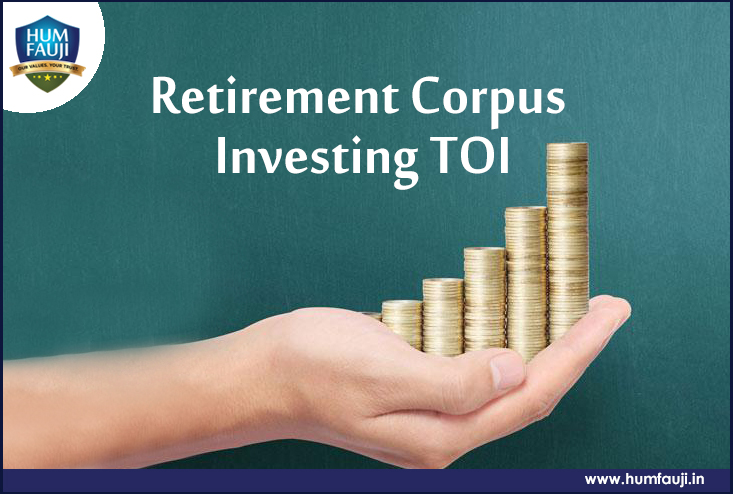Finance Minister Arun Jaitley presented the Union Budget 2018 yesterday, a month ahead of the usual date, in the backdrop of a strong stock market rally in 2017, high equity valuations, rising crude oil prices, dropping bond prices and an expanding current account deficit. As expected, the Budget has a populist stance, given the upcoming state and General elections in the next 9-12 months.
The budget has doled out a series of measures for alleviating farmer distress and boosting the rural economy and ongoing support for broader Infrastructure development. While a lot of technical and financial jargon can be written on what all the Budget has, we would give out here only the salient aspects that concern you and your investments. Anybody interested in knowing more can refer to the 102 pages long Finance Bill 2018 (as the budget is called in official jargon) which is available at lots of websites by now.
Salient aspects of the Budget:-
There is no change in the personal tax slabs. Hence the slabs remain the same as below:
- 0 – 2.5L : Nil Tax
- 2.5L – 5L
: 5% tax - 5L+ – 10L
: 20% tax - 10L+
: 30% Tax - Senior Citizens (60 – 80 Yrs age) : Nil Tax is till 3L
- Super Senior Citizens (80+ Yrs age) : Nil Tax is till 5L
Education Cess is being increased from 3% to 4 % and to be known as Education and Health Cess.
- TDS (Tax Deduction at Source) limit on Interest on FDs raised to Rs 50,000 for senior citizens. Senior Citizen Medical Insurance limit (under Section 80D) raised to Rs 50,000. Critical illness expenditure limit (under Section 80DDB) also increased to Rs 1 lakh for senior citizens.
- Standard Deduction of Rs 40,000 for salaried employees. However, benefits of no-tax on transport allowance up to Rs 19,200 and Medical Reimbursement up to Rs 15,000 under Section 17(2) are being withdrawn. Thus, net benefit to salaried class is only Rs 5,800.
- Section 54 EC benefits, under which one could buy Capital Gains Bonds to save Long Term Capital Gains (LTCG), is now restricted to long term capital gains arising out of sale of land or buildings only and not to any other asset classes. Section 54EC bond tenure is also increased to 5 years from 3 years earlier.
- Penalty for non-filing of Income Tax Returns (ITRs) is being increased to Rs 500 per day from Rs 5000 one-time.
- Government to take all steps to eliminate use of cryptocurrencies which are being used to fund illegitimate transactions. Hence stay away from bitcoins etc since the harsh measures likely to be adopted by the Govt may jeopardise your entire investment.
- In the end comes the contentious aspect of tax on equity (stocks and equity mutual funds). The tax introduced is slightly complicated and hence will be explained below with an example. Please remember that it is much lesser than what was being speculated in media earlier.
A. Long term Capital Gains (LTCG) Tax
Tax Rate:
Capital gains over Rs 1 lakh to be taxed at 10% (no indexation benefit).
Method of Calculation: Any notional gains till Jan 31, 2018 are proposed to be exempted in calculations for long-term capital gains the way they are currently.
Applicability: From April 1, 2018
Investment Implications:
For redemptions done from Feb 1, 2018 to March 31, 2018: No LTCG Payable as earlier.
For redemptions done from April 1, 2018 onwards, LTCG payable on the difference between (i) highest value on Jan 31, 2018 or cost of acquisition, whichever is higher; and (ii) Sale Value
Example: Assuming a stock bought for Rs 100 on July 1, 2017, highest market rate on Jan 31, 2018 is Rs 150, sold on June 30, 2018 for Rs 180, LTCG payable in FY18-19 will be on Rs 30 (Rs 180- Rs 150). The LTCG will be 10% on this Rs 30, that is Rs 3.
B. Dividend Distribution Tax on Equity Mutual Funds:
Tax Rate: Dividend Distribution Tax of 10% introduced on Equity oriented Mutual Funds which was hitherto tax-free. This will be deducted by the Mutual Fund companies and the investors will not have to pay this tax separately.
Applicability: From April 1, 2018 as per Finance Bill 2018
Hence, for those who have been sold (or have enthusiastically bought) Balanced Mutual Fund schemes to get dividends, 10% of the Dividend will go into Govt kitty from April 1, 2018. For those who haven’t, continue not to fall for this mis-selling pitch by some unscrupulous elements.
In our overall analysis, Budgets are irrelevant for long term market moves and this budget will also be the same. The emphasis on the Rural sectors and upliftment of the poor was expected in this last Budget prior to elections. However fiscal profligacy has been avoided to a great extent and that is a positive.
LTCG Tax introduction was widely expected and has come and now will provide policy certainty for the next few years on this front. Beyond this you will read many things in the papers; however, it is the performance of the Real Economy and corporate profits that will determine market movements. So, this is a basically a lack luster Budget which should not affect anything in your life or in your investing life.
For more information, feel free to reach us on, contactus@humfauji.in or call + 011 – 4240 2032, 40545977, 49036836 or
Subscribe to our blog for regular financial updates or follow us on Facebook | Twitter | Linkedin














Leave a Reply